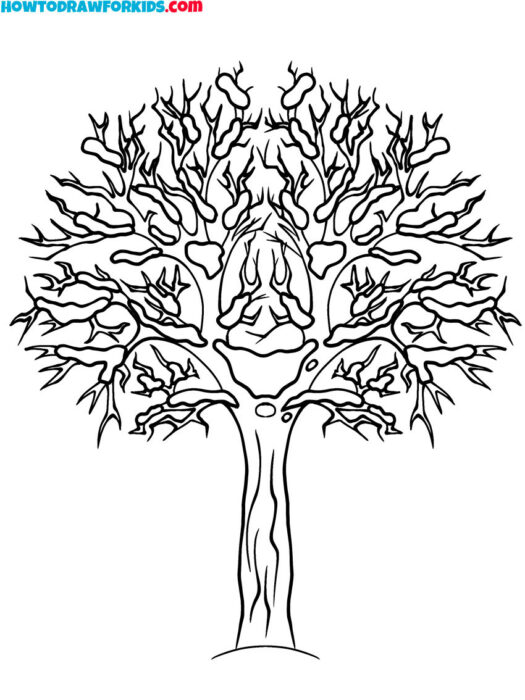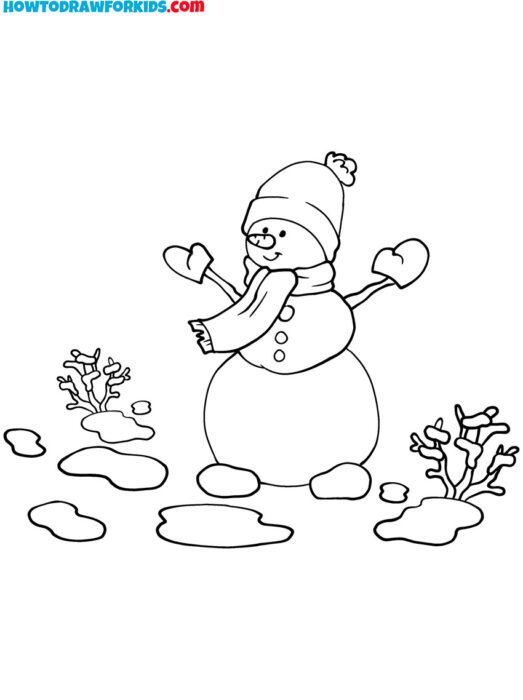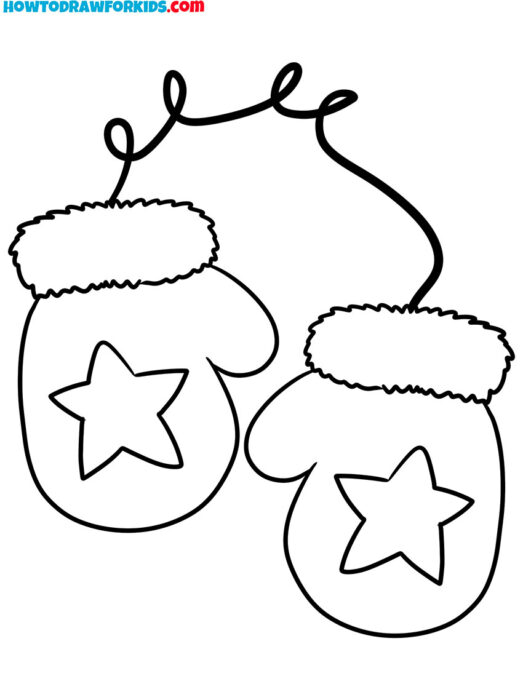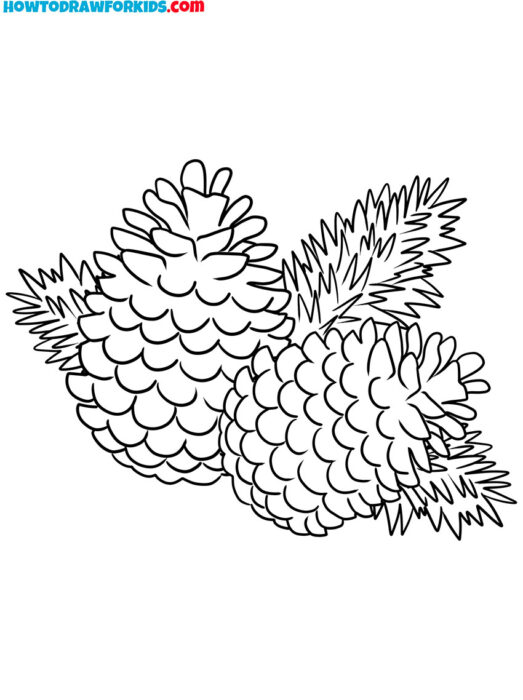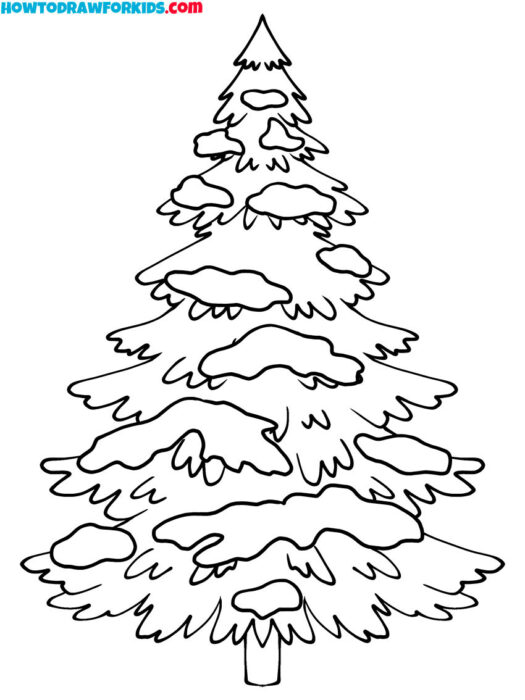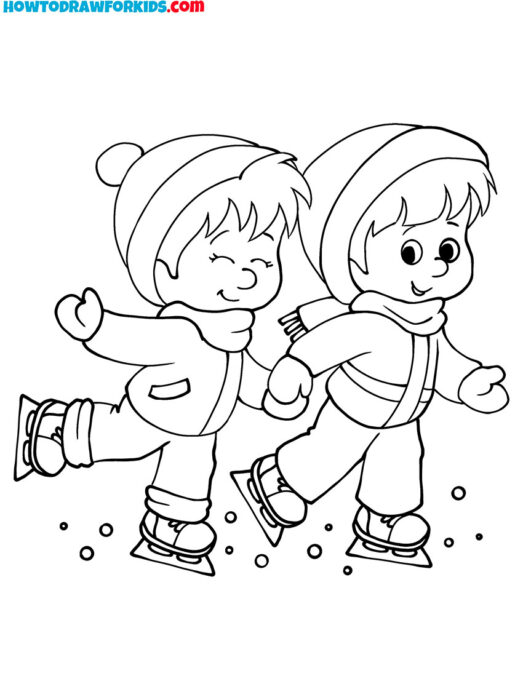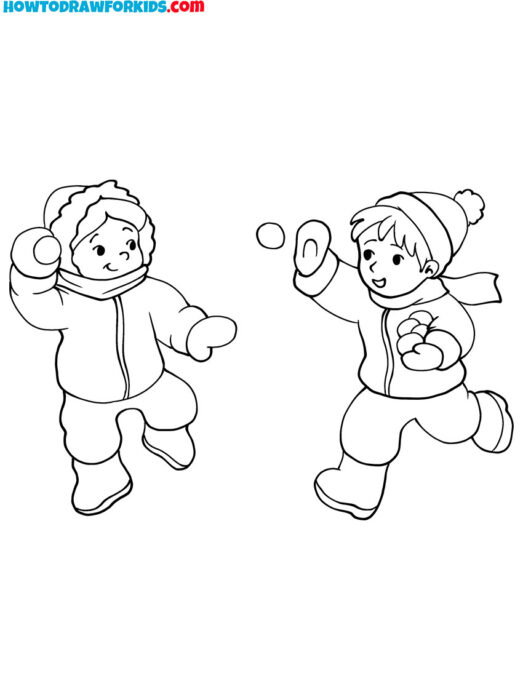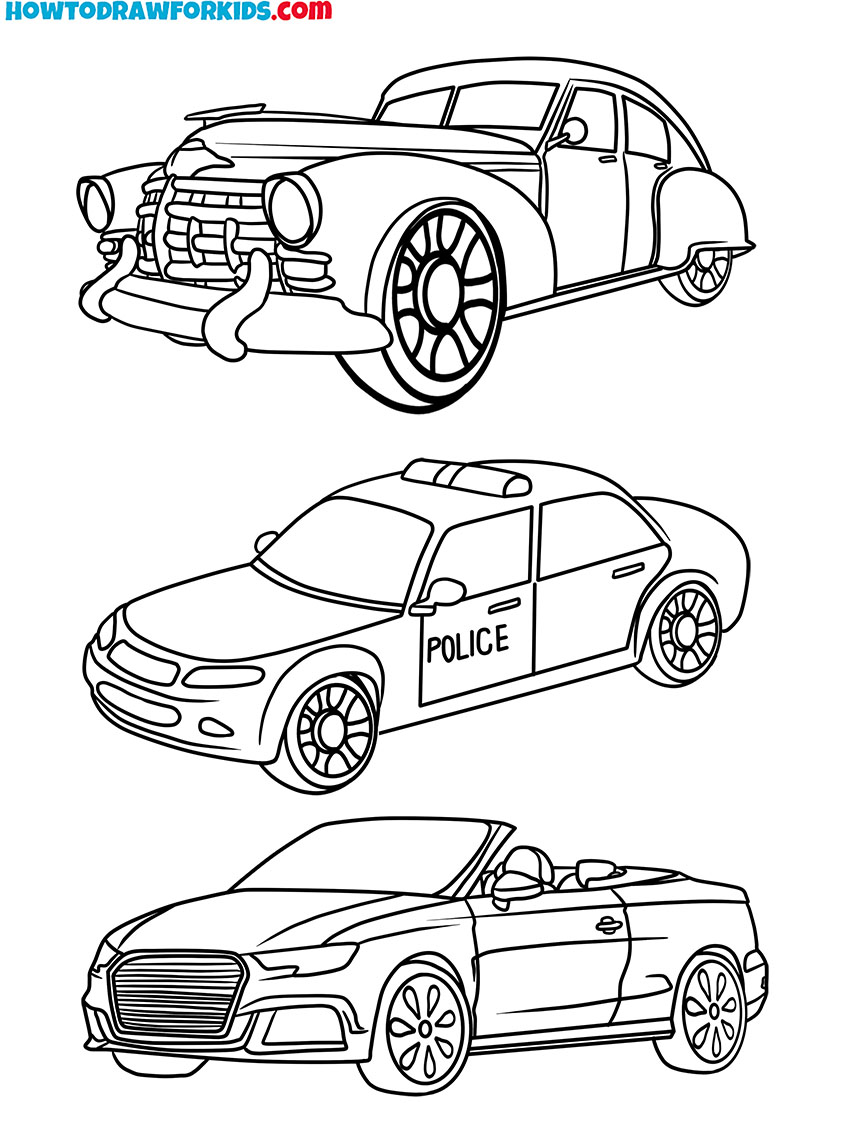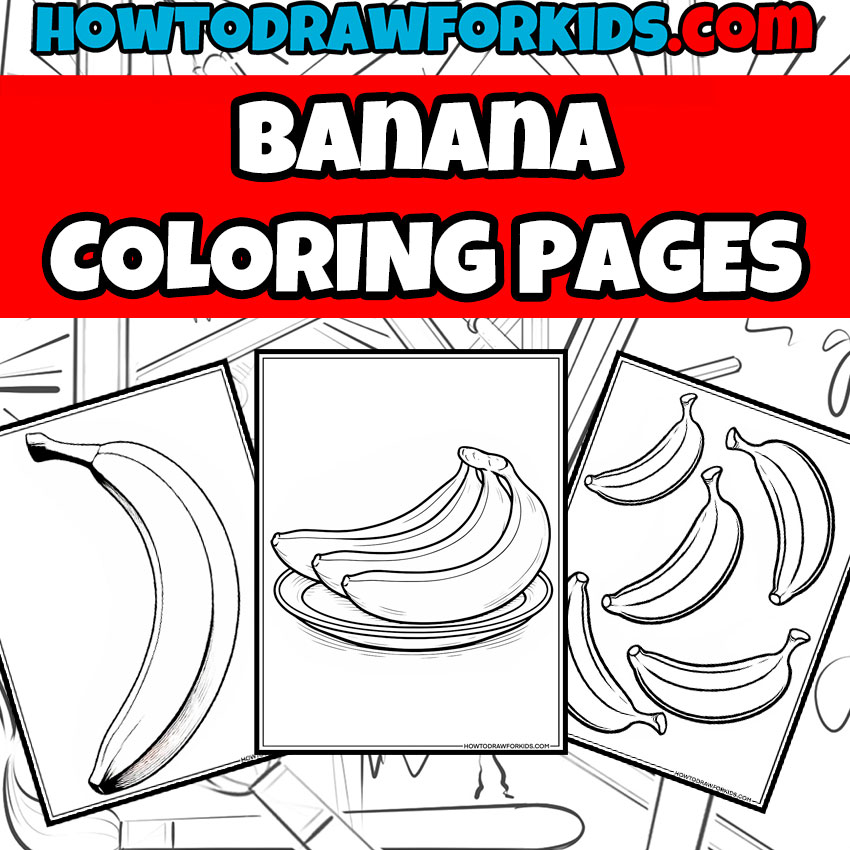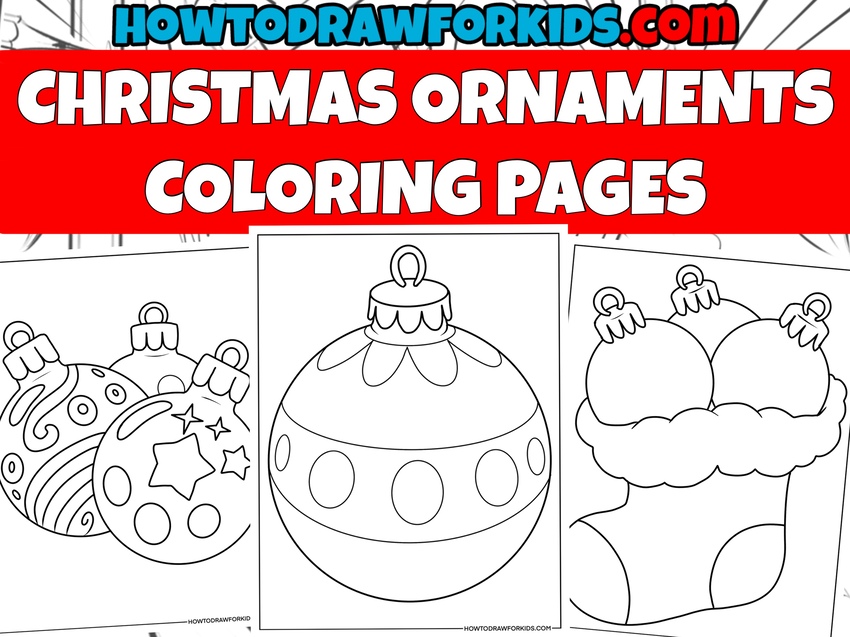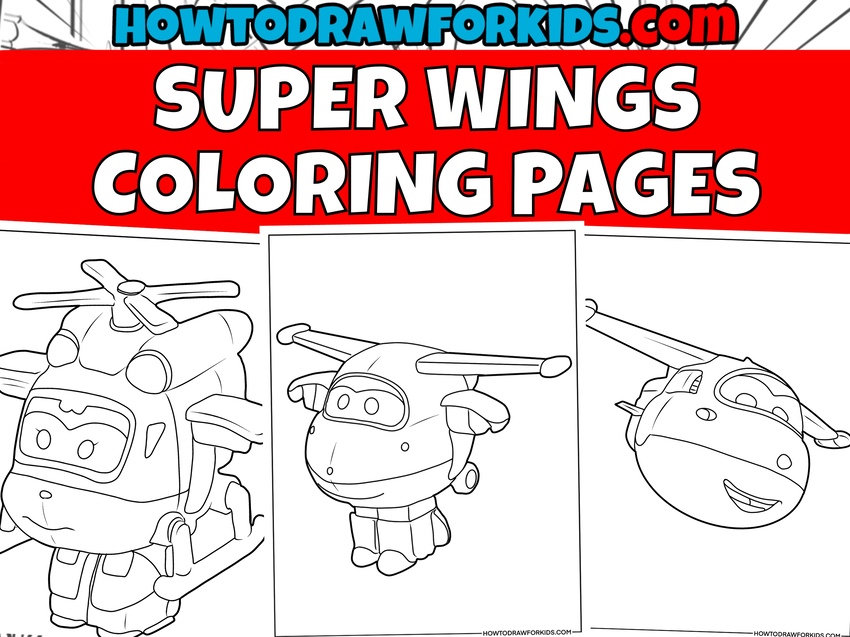Winter Coloring Pages
Train your coloring skills with my winter coloring pages. Scenes of snowy landscapes, cheerful snowmen, and warm fireplace await you.
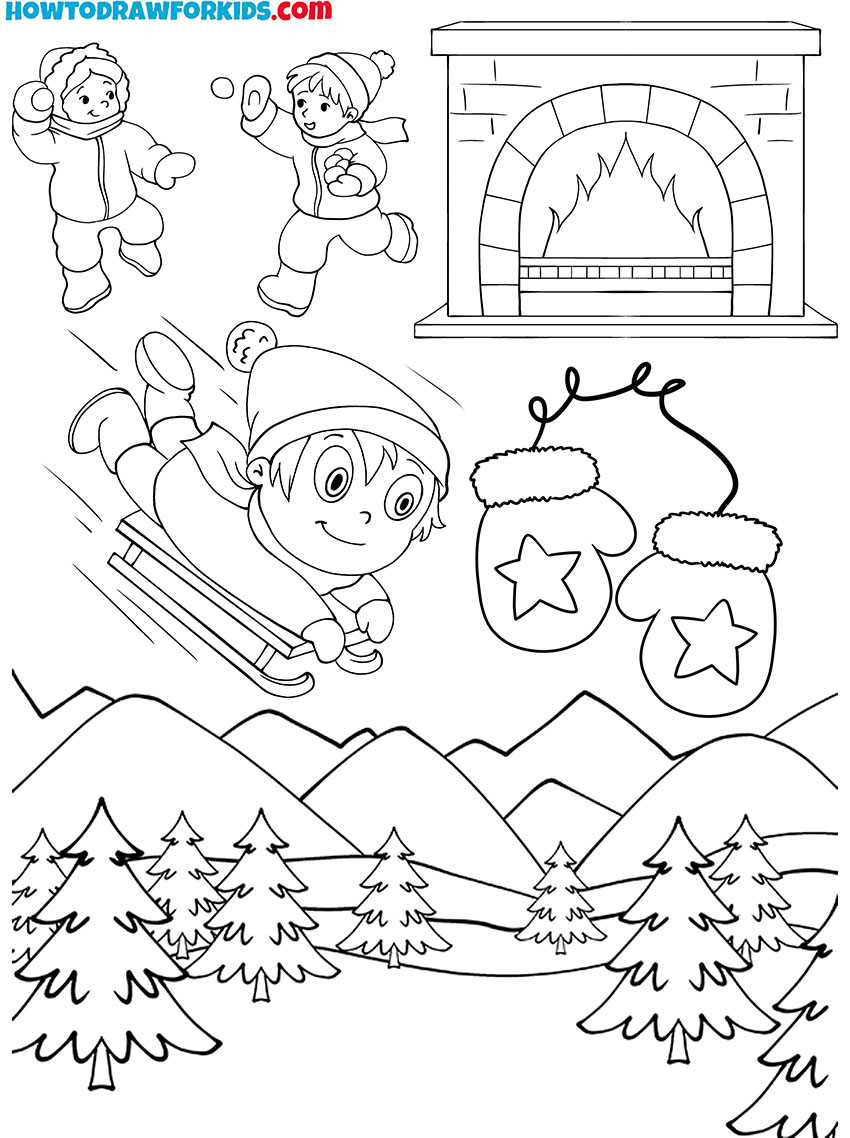
Winter Coloring Pages: Introduction
Inside this collection, there are various winter-themed coloring pages. You’ll find snowmen with carrot noses, trees covered in snow, and homes decorated with lights. These pages provide a range of subjects to color that reflect the winter season.
Winter scenes often feature large amounts of snow, which is typically depicted in white. To avoid flatness, pay attention to shading by using light blues, grays, or even light purples to create dimension in the snow. Shadows under trees, snowmen, and other objects can be created with these subtle tones.
Since snow is primarily white, it’s important to create contrast with other objects. For example, if you’re coloring a snowman, the buttons, scarf, hat, and carrot nose should be vibrant to stand out against the white. Similarly, trees, buildings, and any clothing or accessories can use bold colors like red, green, or blue to contrast with the snowy background.
Winter skies tend to be more muted, so it’s a good idea to use light blues, pale grays, or soft pinks for the sky. For evening or night scenes, deeper blues or purples work well. The sky helps set the mood, so adjusting your color tones can influence whether the scene feels calm and peaceful or dark and cold.
Winter Coloring Pages
Useful Tips and Color Schemes
For the snow-covered winter tree drawing, the trunk and branches should be colored in warm browns to reflect their natural tones, while the snow resting on them can be bright white. To give the snow more realism, subtle gray shadows can be added beneath the snow clumps. If the sky is part of the scene, a soft light blue would represent a clear, cold day.
For the snow-dusted winter pine drawing, deep forest green is suitable for the needles, with white applied to the snow resting on the branches. Darker greens can be used for the inner parts of the tree to add realism, and lighter greens on the outer parts suggest frost. The trunk is typically brown.
In the winter forest and distant peaks, the foreground pine trees should be colored dark green, with white edges representing snow. For the mountain drawings at the background, shades of blue can be used, becoming lighter with distance to create a sense of perspective. The sky may be left white or colored pale blue to illustrate the cold atmosphere.
For the winter pine cones drawing, light brown works well for the base color, with darker brown used for the scales’ edges to give a three-dimensional look. Pine needles can be colored with various shades of green, transitioning from light to dark to mimic natural lighting.
In the snowman page, the snowman’s body can be shaded with light blue or gray to add dimension to the white snow. The carrot nose is bright orange, while the scarf and mittens can be red. The hat might be a blue with white accents, and the branches serving as arms can be brown. The ground is typically white with soft blue shadows. By the way, if you want to illustrate this character, visit my snowman drawing tutorial.
For the home drawing in the snow, warm brown shades can be used for the house’s walls, while the roof and ground should remain predominantly white with light blue or gray shadows. The windows can be colored yellow to create light coming from inside, and the door could be red or green. Icicles can be shaded with light blue transitioning to white for a realistic effect.
The fireplace drawing can be colored with rich browns for the wooden parts, while the flames are a gradient of yellow, orange, and red. The interior of the fireplace can be filled with deep grays and blacks to represent the ashes. The mantle and decorative elements above the fireplace can be colored in soft browns or beiges to simulate wood.
For the warm winter hat and scarf set, red works well for the hat and scarf, while the Christmas tree design on the hat can be bright green. The pom-pom can be red with white highlights, and the scarf ends should have white fringes. And to draw a scarf, visit my step-by-step tutorial.
The mittens can be colored lavender. The stars design could be silver or gold to contrast with the purple mittens, and the fur trim can be creamy.
In the hot drink page, a serene teal is appropriate for the mug, while the whipped cream topping should remain white. The heart on the cup can be a soft pink, and the cinnamon stick should be light brown, with vertical streaks added to represent its texture.
For the snow globe drawing, the base can be navy blue, with the round decorative details in metallic silver or gold. Inside the globe, the snowman’s carrot nose should be bright orange, and the scarf can be colored red. The Christmas tree within should be a deep green with a golden star on top. Presents under the tree can be colored in various festive hues such as purple, blue, and red.
For the children playing snowball fight, one child’s jacket can be bright orange, while the pants can be yellow. The other child’s outfit can feature a sky blue jacket and soft green pants. Their boots can be colored brown, with matching hats and scarves in complementary colors.
The children on ice skates can have bright, contrasting outfits. For one, a red jacket with pink pants and turquoise mittens works, while the other can have a cobalt blue jacket with navy pants and purple mittens. The skates should be white with silver blades to complete the look.
For the child on the sled, a red coat and maroon pants can contrast nicely with the yellow sled. The scarf and hat can be sky blue, with a white pom-pom. The boots can be brown, and the runners of the sled can be silver.
In the scene of children building snowmen, the forest trees should be colored in dark to mid-greens, with lighter shades used for distant trees. The snowman’s carrot nose will be orange, and the children’s winter gear can be bright colors like scarlet red and royal blue. The snowballs remain white.
Conclusion
Completing the winter coloring pages was a simple and interesting task. If you are interested in learning more about drawing or improving your coloring techniques, there are various lessons and tutorials available on the website that can help guide you through more detailed steps.
Additionally, it is important to remember that coloring is a skill that can always be developed further. Paying attention to details such as shading, contrast, and color choices can greatly boost the quality of your work.
Feel free to join me in social media to share your completed pages and see what others are working on. Also, don’t forget to check out my YouTube channel for video tutorials and Pinterest page for announces.

